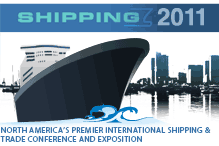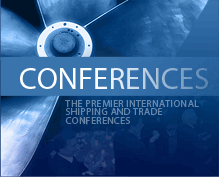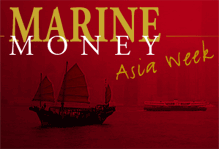
Vietnam Company Looks at US Listing
Last Friday, Vietnamese Trai Thien Group (“Trai Thien”) announced it has agreed to pay state-owned Vietnam Shipbuilding Industry (“Vinashin”) USD 470 million for 16 ships. The first batch of vessels, ranging between 34,000 and 56,000 DWT, will be delivered next year and the group is reportedly looking at issuing shares in the United States some time at the end of this month to finance the newbuildings. Nguyen Quoc Khanh, Chairman and CEO of the Group disclosed during the contract signing ceremony that the group hopes to list 300 million shares in the United States to raise capital and more importantly build up its brand awareness globally. Based in Ho Chi Minh City, it plans to set up an office in California to support its shipping business in the West. Local media reports also suggest that a corporate bond issuance may be on the cards.
In a Sweet Spot
Demonstrating once again that state-owned shipping companies have no lack of access to funds, China Shipping Group has signed a strategic cooperative agreement with Bank of China in Shanghai last week. The Chinese banking conglomerate will provide China Shipping a RMB 80 billion (USD 11.7 billion) credit line and this is the third agreement that China Shipping Group has concluded with the domestic banks. Continue Reading
A Growing Force to be Reckoned With
Private equity and sovereign wealth funds have been much-touted by the media as potential alternative sources of capital for the shipping industry but there have been few success stories lately. This week, we are very pleased to report on one particularly interesting transaction which clearly demonstrates that private equity and sovereign wealth funds do have a role as a capital provider for the shipping sector, albeit in a rather indirect manner.
An investor consortium comprising affiliates of New York based Kohlberg Kravis Roberts & Co. L.P., GIC Special Investments Pte. Ltd. (the private equity and infrastructure investment arm of the Government of Singapore Investment Corporation) and China International Capital Corporation Limited has announced an investment of USD 160 million for a significant minority stake in International Far Eastern Leasing Company Ltd. (“IFELC”), the leading provider of financial leasing in China. The investment will support IFELC’s future growth as it moves to capitalize on the attractive potential in the underdeveloped financial leasing space in China. Continue Reading
Whither the Banks?
While we, in shipping, focus daily on the macro picture, primarily the world economy and micro data, such as commodity prices, steel production, oil prices, charter rates, etc, in order to gauge what is happening, it may well be that the health of our industry is, for the moment, more directly correlated to the condition of the banking industry, particularly in light of the supply side issue. While the capital markets have filled a void in the availability of capital in the interim, the question remains as to whether the banks will be back and if so when?
In his excellent report, What We Have Learned from the Large Financial’s Results, Paul Miller of FBR Capital Markets provides insights into the earnings and the credit and financial condition of a select group of the largest U.S. banks including Bank of America, JPMorgan, Citigroup and Goldman Sachs based upon their most recent quarterly reports. We believe the results of these company’s are indicative of the general condition of the banking world. His key takeaways are as follows:
Continue Reading
“PFIC” – Call Your Accountant Immediately!
For an investor, this is an acronym you don’t want to hear. Unfortunately, Top Ships (TOPS”) announced this week that it expects to be treated as a passive foreign investment company (“PFIC”) for U.S. tax purposes in 2009. This is generally the case if either (1) at least 75% of its gross income for the year consists of certain types of “passive income” or (2) at least 50% of the average value of the corporation’s assets produce or are held for the production of those types of “passive income.” In this instance, TOPS ran afoul of the rules and will be treated as a PFIC, which may have adverse tax consequences for U.S. shareholders.
It fell into this trap as a consequence of the deployment of its fleet. Of the total fleet of 13 vessels, seven, including the six newbuilding vessels delivered in 2009, are employed on bareboat charters. Under the PFIC rules, vessels employed on bareboat charters are considered to earn passive income. Consequently, the youngest vessels, which have the highest asset values, contribute heavily to the total assets employed in the production of passive income. Although management intends to take the necessary steps in order to avoid PFIC status for 2010 and future taxable years, which would likely involve expanding the fleet through the purchase of non-passive income producing assets, there can be no assurance that such remedial measures will be effective.
“Balance Sheet Reinforcement” with Growth
We liked the positive spin that Dockwise Ltd. (“Dockwise”) used to describe what others term as balance sheet repair. In this instance, Dockwise is issuing a total of up to 183 million new shares at a price of NOK 7.7, a discount of 22% to Friday’s close in a direct placement and subsequent offering. New investors and certain existing shareholders subscribed to the direct placement, while the follow-on, at the same price, will be offered to other eligible existing shareholders ensuring equal treatment. The transaction will raise new equity of $220 to $250 million that will be used to repay existing debt. According to Jorgen Andreas Lande of Nordea, “this will reduce net gearing from 131% in 2009 to 69% as net interest-bearing debt at year-end is reduced to $610 million from $980 million at year-end 2008.” While also alleviating covenant concerns, the new capital more importantly positions the company for growth, with the introduction of three new long-term investors with maritime backgrounds. The new investors include HAL, Project Holland Fonds and Sankaty Advisors (see slide on the following page), who in addition to investing in the directed offering, also purchased the 26.2% equity interest of former major stakeholder, the private equity firm 3i.
DnB NOR Markets Hires New Analyst
Kelvin Li has just joined the Corporate Finance team at DnB NOR markets as an analyst. He had a year’s working experience at UBS Investment Bank in New York as an analyst with the investment banking team. Kelvin holds a Bachelor of Business Administration (Higher Distinction) from the Ross School of Business at the University of Michigan, Ann Arbor.
The Funding Gap
How large exactly is the funding gap? Many numbers have been thrown out in the media and this week, we have an estimate from Nordea. George Whist, Head of Shipping and Oil Services – Asia, pointed out that the global orderbook has doubled between 2007 and 2009 and is worth at least USD 350 billion as of 2009, based on his calculations. The demand for capital has never been higher and owners are predominantly from Asia and Europe. In terms of DWT, number of vessels or number of owners, all indicators show that European and Asian owners control in the region of 80% of the world fleet.
Analyzing the supply side of the equation with data from Marine Money, he observed that shipping banks have increased their loan exposure to shipping from USD 187 billion to a staggering USD 346 billion between 2006 and 2008. European banks have been ramping up their balance sheets with shipping debt, not just for the European owners but also for those in Asia. “Banks who are interested in shipping deals have halved and it is not fair to expect the European banks to fund the world’s ships. We need to get a balance. We need to get more money working from Asian banks,” he said. Continue Reading
On the Road Again
On Monday, Navios Maritime Holdings (“Navios”) announced that it and, its wholly-owned finance subsidiary, Navios Maritime Finance (US) Inc. intend to offer, through a 144A private placement, $375 million of first priority ship mortgage notes due in 2017, subject to market conditions.
This marks Navios’ second entry into the high yield market having issued previously 9 1/2% Senior Notes due in 2014 in December 2006. The new notes will in fact be guaranteed by all of the subsidiaries that guarantee the existing notes, so, in fact, the new notes will be secured by first mortgages on 15 drybulk vessels aggregating approximately 1.1 million DWT.
Net proceeds will be used to repay borrowings under Navios’ existing credit facilities as well as to provide financing to complete the acquisition of two new vessels expected to be delivered in late 2009 and early 2010. Both of these vessels will then become part of the collateral package.
Full House in Athens – Part 2
By Kevin Oates
…in the longer term shipping should correct but quality, transparency and financial strength are key to survival.
Despite the tough market and the general lack of ship finance, Marine Money’s Greek Ship Finance Forum again filled the seats in Athens. With 310 delegates and speakers and some 40 more for the TEN Ltd lunch, there was plenty gossip and exchange of views at the 11th Annual conference held on the 8th of October 2009.
The event had started with a speaker’s dinner the previous night co-hosted by Navios Maritime Holdings and was to end in the early hours of the following morning at the Capital Party co-hosted by Capital Product Partners LP at a well-known Athens nightclub. Even if the market is tough, we still know how to enjoy ourselves.
Back at the conference, our day began with Guy Verberne, a leading economist at Fortis Bank (Nederland) telling us that the economic recovery has come and it may well be sustainable. China, he says, has plenty foreign reserves to prolong it’s stimulus package for as long as it needs and he sees no meaningful cutbacks from the stimulus packages of western governments, at least through 2010. A risk is a double dip in 2011 if we get too bogged down in debt.
Continue Reading







